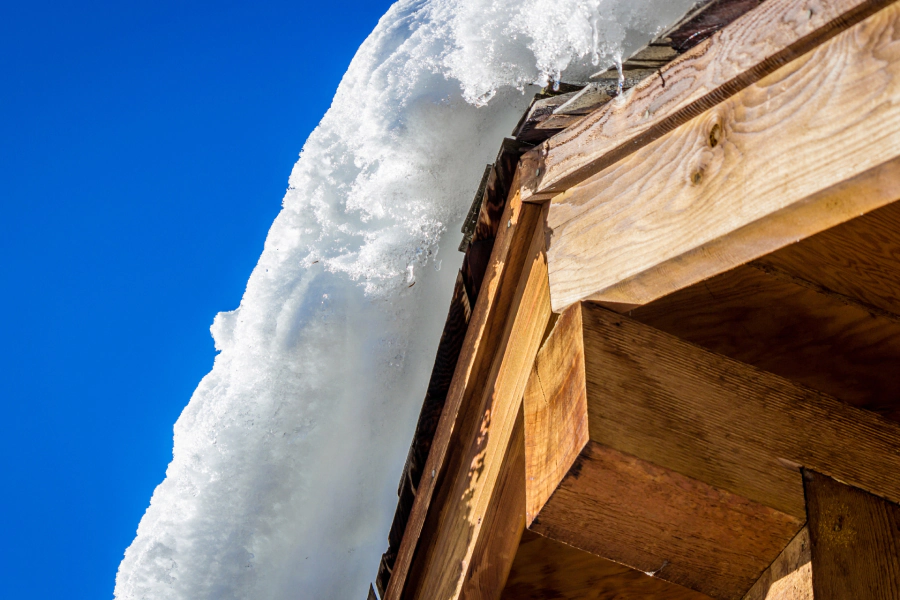
What Snow on the Roof Can Tell You About a Home’s Insulation
If light snow falls overnight – just ½” or so – notice in the morning what the pattern of melting is on your roof, then check your neighbor’s roof. If you see the snow before the sun has had a chance to work on it and before the wind has blown it around, you can see a lot about the efficiency of a house. All we can see are problems in the attic, not in the rest of the house. The following pictures were taken before 8:00 AM the morning after the same light snow.
Here is a house to envy. Ranch houses have a better chance of being efficient than other types because of their simple geometry. The snow is not affected by the heated house, meaning that the attic floor is reasonably airtight and insulation is sufficient.
This house is good news and bad news. The good news is that it is beautifully restored and from the 18th century, but the bad news is the owner is paying to melt the snow on his roof. Very little insulation and a leaky attic floor.
Here is a pretty good addition on the back of an inefficient main house.
This shot shows a duplex. Which side has the insulated and air sealed attic? Which one has the higher bill?
The split-level is a common type of house in our area, built from the 50s to the 80s. It’s a two-story house that has been split in the middle with the sides shifted up and down. That split wall in the middle is an open pathway from the basement to the lower of the two attics. Here you can see the heat from the interior has melted the snow on the lower attic roof, but not on the upper attic roof.
Can you spot the missing insulation?
This Dutch colonial has the typical holes in the house across the front into the small roof area above the front door. This results in a cold floor on the second floor and higher energy use.
This is the worst energy problem we build into houses – the Cape Cod Syndrome. The small triangular attics across the front and back are open into the house. This problem not only wastes energy, but it also takes the moisture in the air from your cooking, showering, and breathing and puts it into the attics where it can cause mold and rot. Notice the addition on the left is pretty good.
Row houses are not immune from problems – in fact, they can have some of the worst. These two attached houses have the Cape Cod Syndrome going on, but also notice the straight line of melted snow up the center of the roof. This is the common wall that we all think is “free heat.” A middle row unit has 2 of these energy wasters and can have higher bills than the end row unit has.
Ever wonder about those ducts in the attic? They cool the attic in the summer and heat it in the winter, and cost you both money and comfort. The roof on the left is a cathedral ceiling that is poorly insulated, but the roof on the right is full of ductwork.
This shot was taken after a much larger snowstorm. Notice how quaint the building looks with the icicles hanging down the front eave. This is caused by a warm attic that melts the snow layer from the bottom. That water runs down the warm roof until it hits the cold area at the edge, where it freezes and backs up under the shingles. You can get water in the attic and the house, and a lot of damage.
So next time it snows, let your neighbors know what you think of their efficiency.